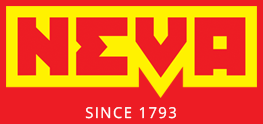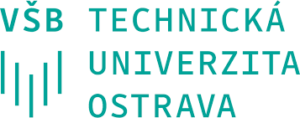X-ray diffraction
Head of the laboratory: Nikolaj Ganev
Staff: Jiří Čapek, Karel Trojan, Kamil Kolařík
Phone: +420 778 534 842
Areas of research






Laboratoř strukturní rentgenografie katedry inženýrství pevných látek FJFI ČVUT je pracoviště vědecké i pedagogické. Kromě výuky studentů se ve své vědecko-výzkumné činnosti tradičně zaměřuje především na rtg difrakční studium stavu zbytkové napjatosti v polykrystalických kovových i keramických materiálech.
Přístrojové vybavení laboratoře bylo v posledních letech výrazně inovováno a dnes umožňuje rovněž zkoumat kvalitativně i kvantitativně fázové složení a přednostní orientace (textury) polykrystalických materiálů. Tyto charakteristiky reálné krystalové struktury pevných látek patří mezi základní parametry, jejichž znalost je nepostradatelná při návrhu nových progresivních materiálů a optimalizaci požadovaných užitných vlastností.






Areas of research
The X-ray diffraction laboratory at the Department of Solid State Engineering at FNSPE, CTU in Prague is a scientific and pedagogical workplace. In addition to teaching students, in his scientific and research activities he traditionally focuses primarily on X-ray diffraction studies of the state of residual stress in polycrystalline metal and ceramic materials. The instrumentation of the laboratory has been significantly upgraded in recent years and today also enables the qualitative and quantitative investigation of the phase composition and preferred orientation (texture) of polycrystalline materials. These characteristics of the real crystal structure of solids are among the basic parameters, the knowledge of which is indispensable in the design of new progressive materials and the optimization of the required useful properties.
The operational reliability and service life of engineering products are not only a function of the composition of the materials, but also of the technological procedure used in their processing. In research and development, it is expedient to use non-destructive X-ray methodology, which is able to describe both the phase composition of the analyzed part and the residual stress values.
The topics of the problems solved both within the framework of basic and applied research projects and also at the request of our and foreign workplaces are extremely varied. Industrial partners were interested in the development of residual stresses in the surface layers of coil springs, in passenger car transmissions, motor locomotive axles, etc.
The research carried out is an example of the education of physical engineers: from a perfect understanding of the theory of physical processes, preparation and mastering of experiments to study the real structure of solid substances to the use of laboratory research results in industrial practice.
The laboratory cooperates with leading industrial companies in the Czech Republic and with foreign institutions, see References.
Experimental equipment
- Diffractometer Empyrean (PANalytical) with the efficient position sensitive 1Der detector with high energy resolution and with accessories for the study of thin films and textures.
- Diffractometer X'Pert PRO MPD (PANalytical) with high efficiency X'Cellerator position sensitive detector with texture study accessories.
- HTK 2000N high-temperature chamber for in-situ x-ray diffraction studies up to 2300 °C.
- Two x-ray diffraction devices with area detection of diffraction patterns SEIFERT ID 3003 from GE Inspection Technologies, where a modern two-dimensional solid-state detector (imaging plate) is used instead of X-ray film.
- LectroPol 5 device for defined gradual electrolytic removal of surface layers necessary for the study of depth courses of structurally sensitive characteristics.
- Proto Electropolisher Model 8818-V3 mobile device for defined gradual electrolytic removal of surface layers.
Projects
- Highly productive machines for digital factory environments (2021-2024)
- Laser Treated Axles (2019-2022)
- Innovative methods of welding of high pressure devices using laser technologies (2017-2022)
- Non-destructive evaluation via Barkhausen noise emission (2017-2018)
- Advanced technology development of high power grinding for dynamically loaded parts from hard-to-machine super-alloys for power and aeronautics industry with respect to surface integrity (2014-2017)
- Mechanical properties of functional surface layers of submicron thicknesses (2009-2014)




